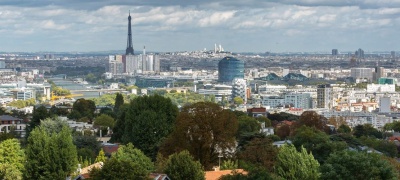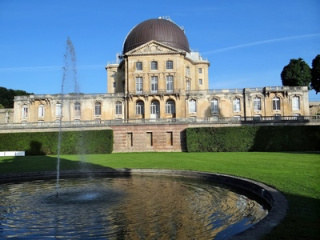Sotheby's International Realty
- 138 Avenue Victor Hugo
- 75116 PARIS, France
- +33 1 40 60 50 00
Sotheby's International Realty
- 50 rue d'Auteuil
- 75016 PARIS, France
- +33 1 56 26 56 55
Sotheby's International Realty
- 82 Avenue de Wagram
- 75017 PARIS, France
- +33 1 46 22 27 27
Sotheby's International Realty
- Place Sainte Foy - 2 Rue de Chézy
- 92200 NEUILLY, France
- +33 1 41 43 06 46
Sotheby's International Realty
- Place Sainte Foy - 2 rue de Chézy
- 92200 NEUILLY, France
- +33 1 41 25 00 00
Sotheby's International Realty
- 37-39 rue de Turenne
- 75003 PARIS, France
- +33 1 48 87 14 41

Meudon
Rich in history and home to the Château de Meudon, Meudon, nestled in the Hauts-de-Seine, offers a unique living experience just a few kilometers from Paris, blending natural beauty with tranquility. Known for its expansive green spaces, prestigious properties, and serene atmosphere, Meudon is a residential haven that epitomizes luxury and refinement. The city is distinguished by its spacious homes, elegant residences, and high-end apartments, often located in lush, peaceful settings. Residents enjoy a setting enriched by the Parc de l'Observatoire and the Meudon Forest, as well as a range of cultural, educational, and recreational activities.

Nestled in the Hauts-de-Seine department, Meudon is a town renowned for its enchanting nature and tranquility, offering a unique living environment just outside Paris thanks to its surrounding forest. This choice residential area is ideally located a few kilometers from the capital while preserving a peaceful and green atmosphere. Meudon’s charm lies in its generous green spaces, parks, and exceptional residences, which contribute to creating an unparalleled living environment.
Prestige Real Estate in Meudon
The prestigious real estate in Meudon reflects the luxury and refinement sought by the most discerning buyers. The town is distinguished by its spacious properties, often situated in calm and green residential environments. The most sought-after properties include mansions, private hotels, and high-end apartments, offering generous spaces and meticulous finishes.
Lifestyle and Activities
Living in Meudon means choosing a lifestyle where serenity and comfort come together. The town offers a range of activities and leisure options that will satisfy residents in search of relaxation and culture. The Parc de l'Observatoire and the Bois de Meudon are peaceful havens, perfect for family walks, hiking, and outdoor activities. The Parc de l'Observatoire, with its vast green spaces and landscaped gardens, provides an ideal place for moments of relaxation in complete tranquility.
Meudon is also rich in cultural and social activities. The town is home to several cultural and sporting institutions, such as the Théâtre de Meudon, which offers a varied program ranging from classical theater to contemporary performances. Art lovers will also find satisfaction with local galleries and temporary exhibitions held throughout the year.
For families, Meudon offers renowned schools and quality educational institutions, such as Lycée Louis Armand, ensuring high-level education close to home. The town is also equipped with leisure and sports centers that allow residents to enjoy various activities, from swimming to horseback riding.
Luxury Real Estate in Meudon
Prestigious real estate in Meudon is characterized by high-quality properties offering luxury amenities and prime locations. As of July 2024, the average price per square meter in Meudon is €5,822 for older properties, while new properties average €7,767 per square meter. These prices reflect the growing demand for high-end residences in this sought-after town.
Luxury properties in Meudon include elegant houses with landscaped gardens, sunny terraces, and breathtaking views of the surrounding green spaces. High-end apartments, often located in modern or renovated buildings, feature refined interiors, cutting-edge amenities, and top-quality finishes. Residences in Meudon stand out for their carefully designed and modern comfort, meeting the expectations of buyers in search of prestige and quality of life.

The Forest of Meudon: A Green Haven on the Doorstep of Paris
The Forest of Meudon, spanning over 1,000 hectares, is one of the major assets of this tranquil city. A true green lung at the gates of Paris, it offers an exceptional setting for nature lovers and outdoor activity enthusiasts.
A Haven of Peace and Nature
The Forest of Meudon is a place of relaxation and rejuvenation, ideal for escaping the hustle and bustle of urban life. Its shaded trails invite leisurely walks, jogging, or longer hikes, offering splendid views of the city and its surroundings. The vast wooded areas are perfect for family picnics, peaceful strolls, and even wildlife observation, with deer, wild boars, and numerous bird species.
A Space for the Whole Family
For families, the Forest of Meudon offers a multitude of activities that will delight both young and old. Children's play areas, educational trails, and spaces dedicated to sports make this place a true outdoor playground. The forest also features areas for sports such as mountain biking and horseback riding at the Meudon Equestrian Club, allowing residents to stay fit while enjoying the natural beauty of their surroundings.
A Cultural and Historical Dimension
The forest is not only a recreational area but also a site rich in history. It houses architectural remnants such as the Château de Meudon, providing a glimpse into local history and a majestic backdrop for historical walks. Visitors can also explore the old quarries and uncover elements of the region's industrial past.
Bellevue
The Bellevue neighborhood in Meudon stands out for its green setting and proximity to the Meudon Forest, which has encouraged the development of many single-family homes and small, low-rise buildings.
This residential area benefits from a tranquil and green environment, where elegant properties blend harmoniously with the natural landscape. Residents of Bellevue enjoy a privileged living environment, where the charm of characterful houses merges with the beauty of the surrounding green spaces, providing a peaceful and refined place to live.




